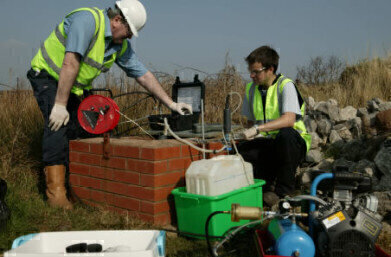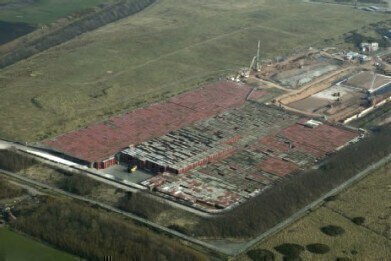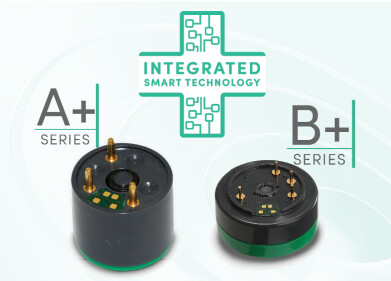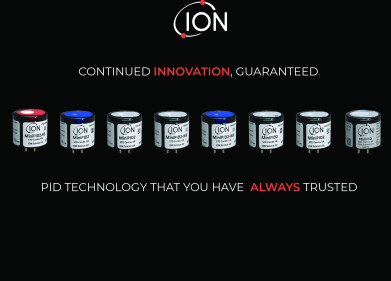Environmental Laboratory
Managing Environmental Data at Nuclear Disposal Facility
May 08 2010
The Low Level Waste Repository (LLWR) is the principal national disposal facility for low level radioactive waste in the UK. The Repository plays a key role in delivering the UK’s nuclear decommissioning strategy for site owners the Nuclear Decommissioning Authority NDA. Originally disposal of waste was based on landfill practices, with waste being tipped into claybased trenches (7 in total) and covered with layers of stone and soil. This practice stopped in the 1990’s and the trenches were covered with a water resistant cap. Following a major upgrade of disposal operations in 1995, the waste is now placed in engineered concrete vaults.
Low level waste mainly arises from the the nuclear industry during power generation and decommissioning activities but it is also generated by research, healthcare, defence and oil and gas industries. The waste typically comprises paper, packing materials, plastic sheeting, protective clothing and redundant equipment. Other types of waste include bulky and heavy items resulting from the decommissioning of nuclear facilities and old industrial sites. Where possible, waste is compacted and placed in metal containers before being transferred to the LLWR for grouting
and emplacement in the vaults.
LLW Repository Ltd (LLWR) is the management and operation contractor on site and manages the day to day activity on behalf of the NDA. LLWR has always taken a proactive view in managing the environmental impact from the repository. Since its inception a vast amount of data has been collected in and around the site, in order to manage and minimise impacts.
Data collected includes:
- drilling logs (lithology etc.),
- soil samples and analyses,
- ground water and surface water data which in both cases includes levels, flow rate data, samples and analyses (both on and off-site),
- leachate flow rates, levels, samples and analyses,
- air samples (gas-phase emissions, dust, etc.)
- other environmental samples and analyses (Dose rate monitoring, Meteorological Station data, etc).
The monitoring also includes extensive radiometric monitoring undertaken on-site, at the perimeter and at various off-site locations for air-borne and water-borne radioactivity. Results from this monitoring are routinely provided to the Environment Agency and other bodies. Discharges of radioactivity however to air and water are so low as to not require limitation by the Environment Agency. Prior to purchasing MP5 to manage this monitoring data, LLW Repository Ltd kept the data in a variety of different systems and datasets. In January 2009 a review was undertaken to
identify a system they could use to hold the data as a single dataset. With a forecast of collecting up to 8 million data points annually, LLWR were looking for a secure, auditable system which could contain this ever-increasing volume of data and offer additional benefits of flexibility and ease of use. Monitor Pro’s MP5 system was selected from among 5 systems reviewed and was the only system with Environment Agency MCERTS accreditation. Prior to full installation a data transfer task was undertaken which involved the import of historic data stretching back over 30 years into MP5. The dataset is currently approaching 20GB, still with only approx 70% of the available data imported. All of the historical data which is now being imported is being validated using the MP-5 import processor and files of often 100,000 readings at a time are being imported. The MP-5 Import Processor validates for impossible readings, compliance breaches, misspellings and inconsistencies, invalid dates and also outliers based on auto-generated rules based on mean plus 4 standard deviations from the mean of historical data.
LLW Repository hold 10 licences for MP5 but are currently operating one licence on a standalone PC with the data linked to the LLWR GIS system (ESRI ArcMap), the intention being to run the system on the Local Area Network once network security issues are resolved. Since installation, the system has been in constant use both acquiring data and in data presentation. The MP-5 reporting tools allow easy dissemination of data within LLWR, to relevant contractors and stakeholders such as the Environment Agency and the Nuclear Installations Inspectorate. To aid this further, several report templates will be prepared in house which mean that reports can be produced with a double mouse click drastically reducing the amount of effort and time required in report preparation.
James Champion (Environmental Advisor) at LLWR said ’Although it has not been fully setup, as yet, the ability to establish and track a monitoring schedule in MP5 will be particularly useful. We are also able to show full auditibility and validation of our data which has been key since to date most of our data comes from contractors and other third parties’. Since their purchase of MP5 LLWR have recommended the system to another nuclear company for managing their environmental data – and trials are under way.
Digital Edition
IET 34.2 March 2024
April 2024
Gas Detection - Biogas batch fermentation system for laboratory use with automatic gas analysis in real time Water/Wastewater - Upcycling sensors for sustainable nature management - Prist...
View all digital editions
Events
May 13 2024 Munich, Germany
May 15 2024 Lund, Sweden
May 15 2024 Frankurt-am-Main, Germany
May 20 2024 Columbus, OH, USA
May 21 2024 Lagos, Nigeria



















